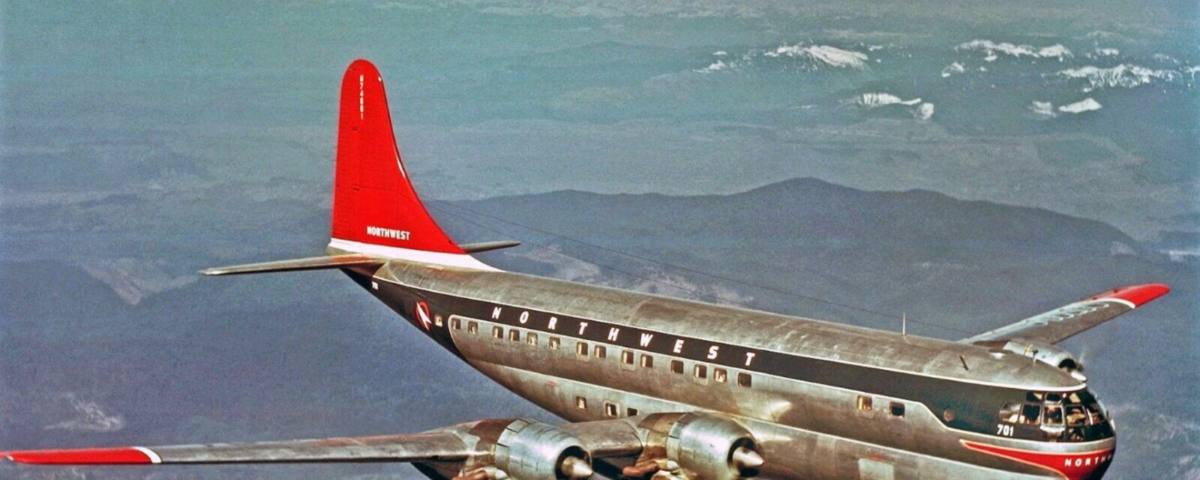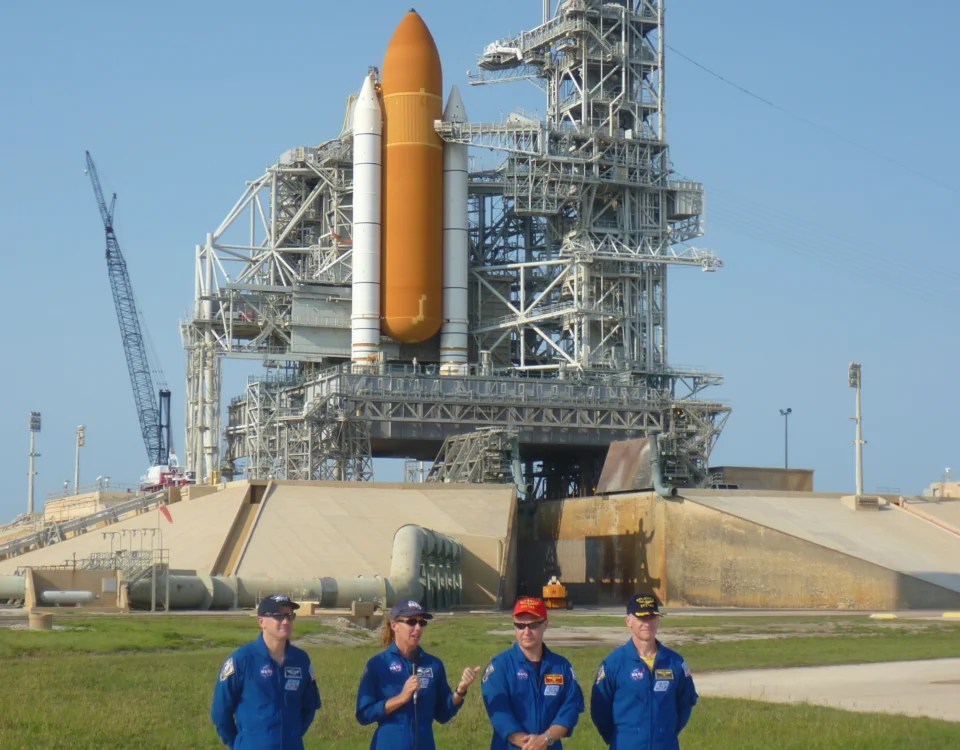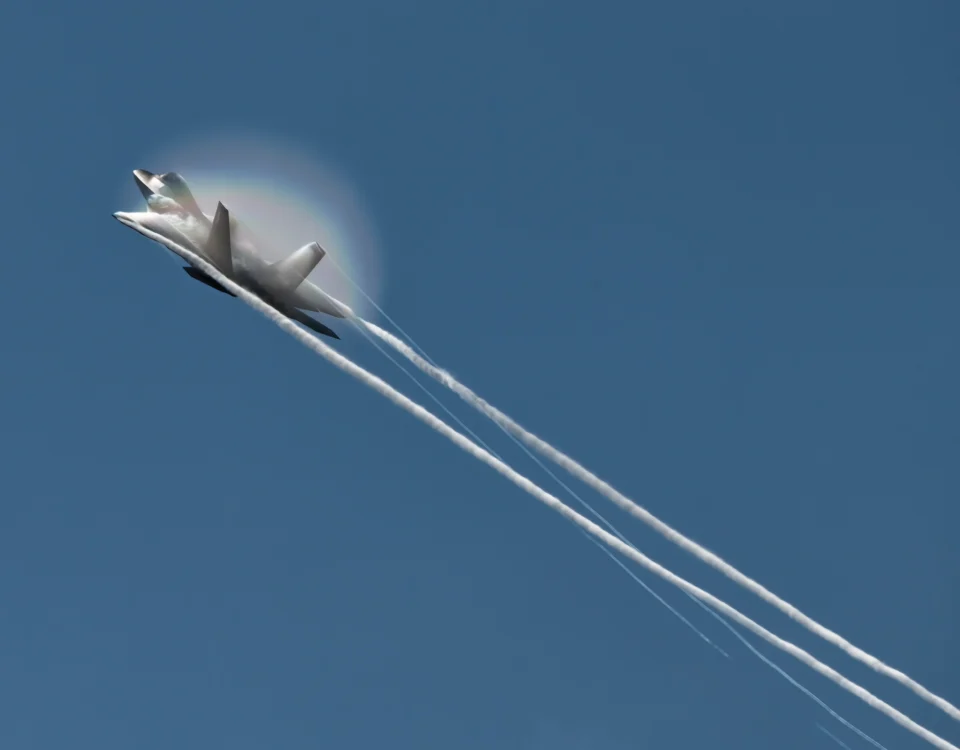
Almost everyone – not just followers of aviation developments – knows of the heroics of pilots Chesley “Sully” Sullenberger and Jeffrey Skiles. In 2009 they guided their stricken Airbus A320 to a river landing that allowed everyone on board to survive the crash, a turn of events that became known as “The Miracle on the Hudson.”
In a letter published in the April 21-May 4 issue of Aviation Week & Space Technology, a writer made a casual reference to an incident that sounded equally amazing to me. Hawaiian Ted Ralston wrote, “WIG effect (wing-ground-effect) was once known as the Tyson effect, named for an 1950s airline captain who coaxed a Boeing 377 with two engines inoperable on the same wing halfway across the Pacific Ocean by flying at 100 feet…”
What?
This was an aviation feat I had to know more about! And I was surprised it seemed totally unfamiliar to me. Off to the search engines I went…
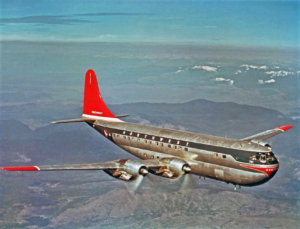
Boeing Stratocruiser in Northwest Airlines livery as N74601 in a 1949 promotional photograph of a then-new Boeing 377. Image: Northwest Airlines History Center
I did find accounts of the flight of one “Air Commander Tyson,” in charge of a trans-oceanic flight from Hawaii to San Francisco. Tyson was at the controls of a Boeing 377 Stratocruiser, a pressurized cabin passenger plane developed on the lineage of the famed B-29 Superfortress which had served during World War II. Capable of carrying just over 100 passengers, the 377 began commercial service after a first flight in July, 1947. A total of 56 of the aircraft were constructed before delivery of the final plane took place in 1950, though the four-engine design flew on through the 1950s.
On this specific flight, the commander of the aircraft was apparently taking satisfaction in a by-the-book, orderly flight high above the Pacific Ocean when disaster struck. The four-blade propeller of engine two on the left wing separated violently from its mount, making matters instantly worse by careening into the adjacent engine, rendering it inoperable. With two engines out, the Stratocruiser began an undesired descent, despite commander Tyson’s efforts to apply as much power to the right-wing engines as possible.
The likelihood of a fatal ocean crash found everyone on board preparing for what seemed like the inevitable. But then Tyson began to sense a saving grace. As the airliner neared the surface of the water, the rate of descent slowed dramatically. Skimming just above the water surface, the commander was able to keep the 377 aloft for hundreds of miles, in the process burning sufficient fuel for the aircraft to climb higher into the skies and stave off what had been certain disaster.
What Tyson had discovered under the threat of destruction became known as the Tyson Effect, or T-effect, more commonly known today as “ground effect.”
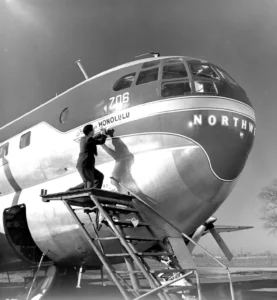
Northwest Airlines N74606 is christened “Stratocruiser Honolulu.” Perhaps this is the Boeing 377 the mysterious “Commander Tyson” saved from a watery grave during a flight from Hawaii to California? Image: Northwest Airlines History Center
It is certainly an exciting tale, one of desperate circumstances leading to a fundamental discovery.
The only problem is that in searching for details about the mysterious Tyson and his 377 Stratocruiser’s miraculous salvation I could only find three references to what I assumed was a historic aviation event. And all three essentially offered the same account, all written in similar manner by the same person, the highly-respected pilot and writer Barry Schiff. One recounting appeared the July 1978 issue of the Aircraft Owners and Pilots Association publication The AOPA Pilot. A second variation apparently ran in 1990 in a publication called New Zealand Gliding Kiwi. And the third appearance of Commander Tyson’s exploits appeared in a book Schiff authored, The Proficient Pilot, Volume 2.

One of the few sources that can be found referring to the exploits of “Commander Tyson,” apparently all written by respected pilot Barry Schiff. Image: Aviation Supplies and Academics, Inc.
I am not claiming the Tyson incident was manufactured. However, it does seem strange that such a fundamental occurrence that led to revelations of theories still in active play to this day would not be recognized in a more forthcoming manner. What was the date of this disrupted flight? Which airline’s livery was emblazoned on this fortunate Stratocruiser? And why has apparently no one else documented this hair-raising flight?
To me, the tale of Commander Tyson can only remain a mystery – with facts hard to come by and so little to go on. But I would certainly welcome enlightenment from anyone who can provide more details about what should assuredly be an aviation legend.
Feel free to reach out via: aerospaceperceptions@comcast.net


